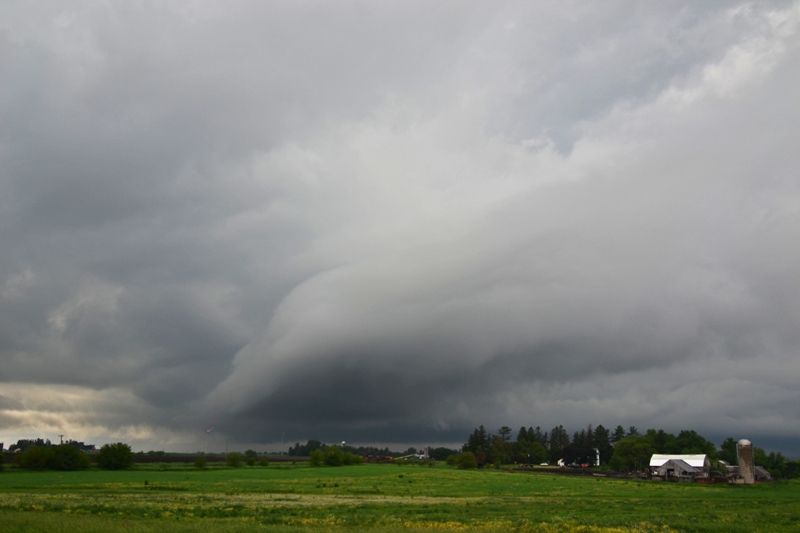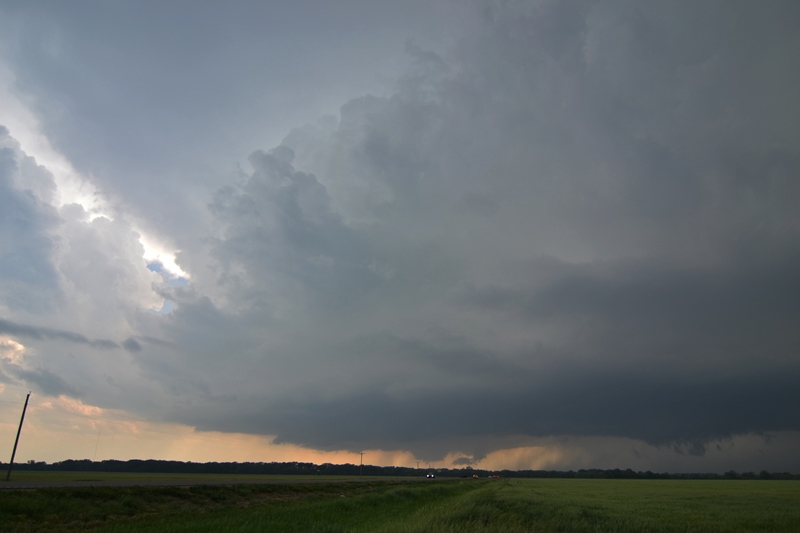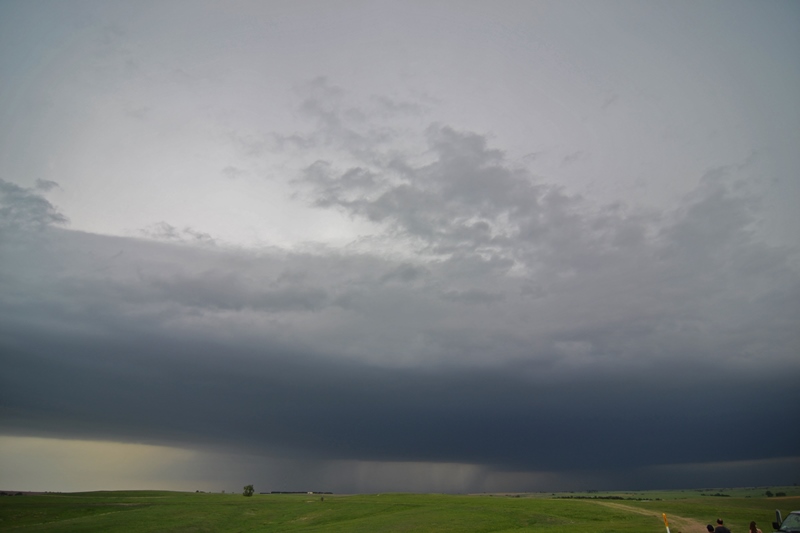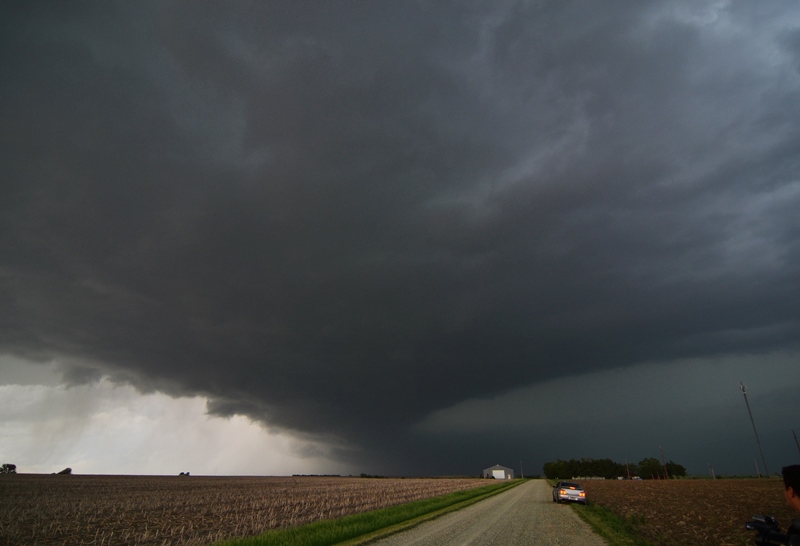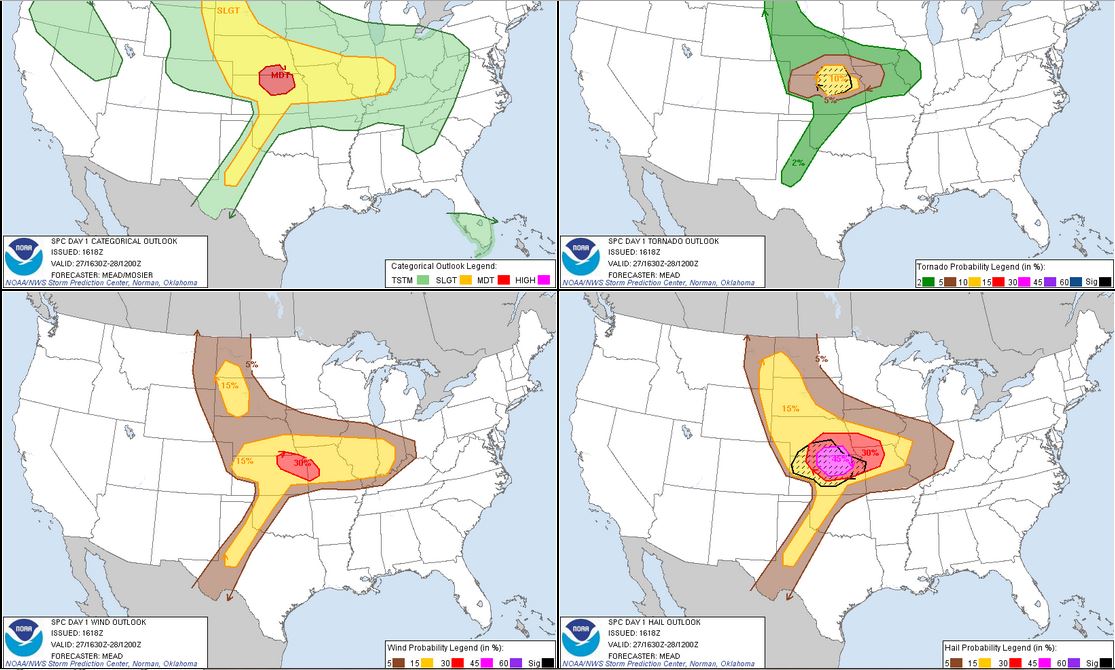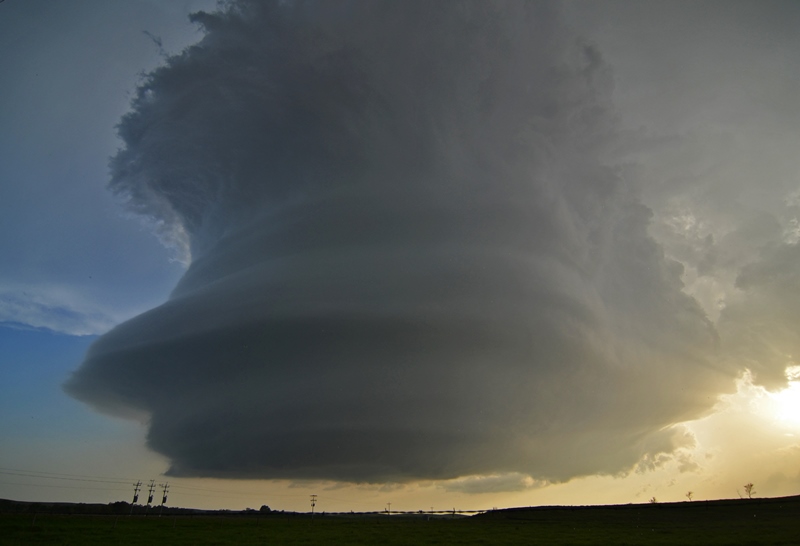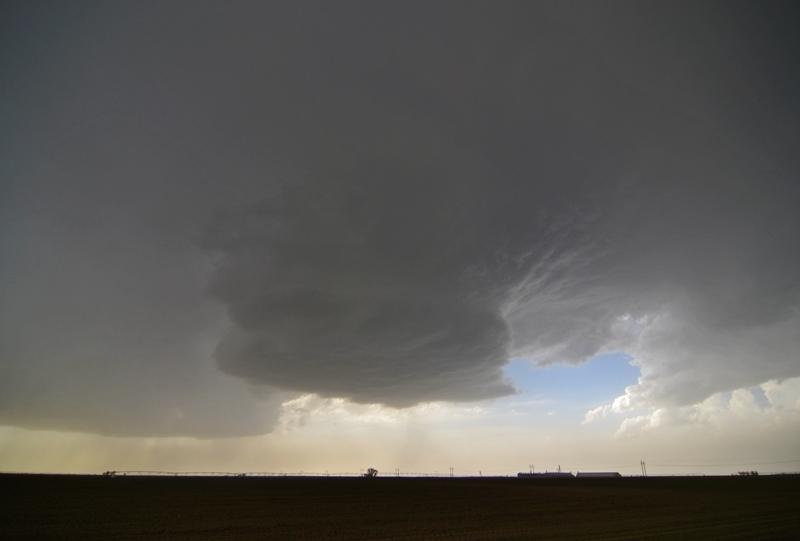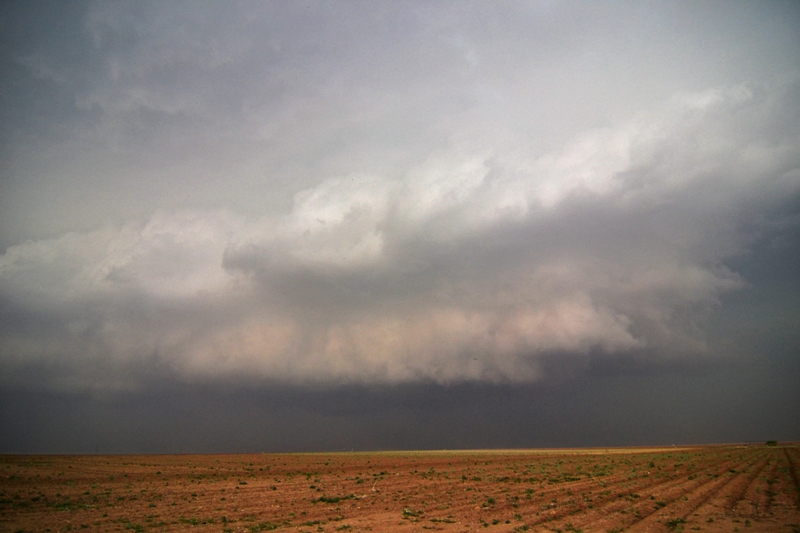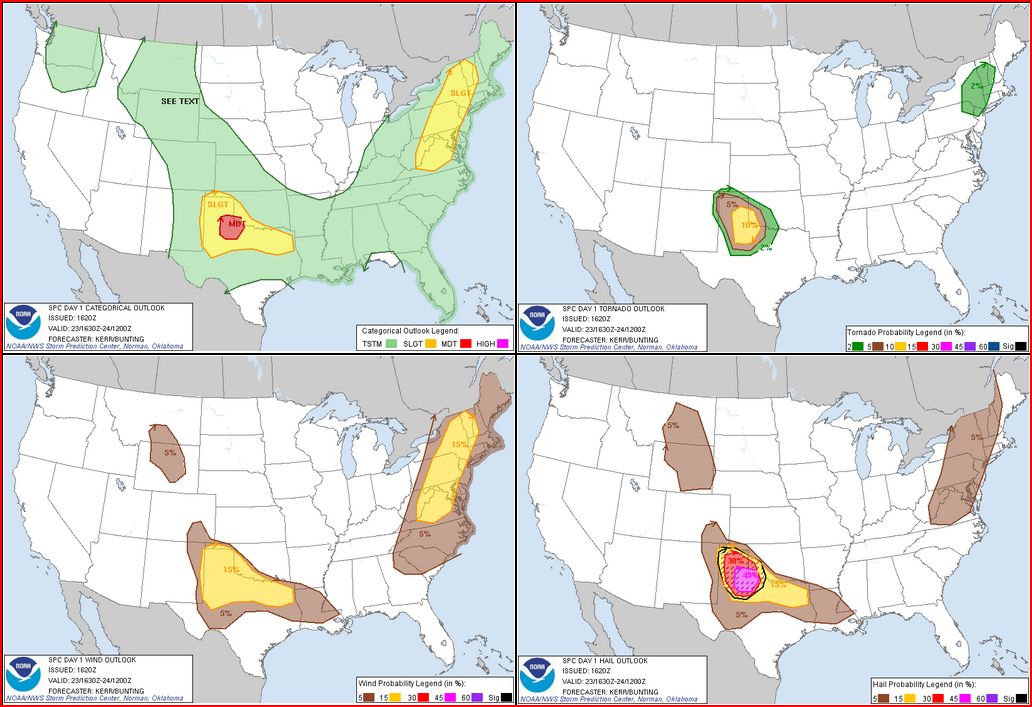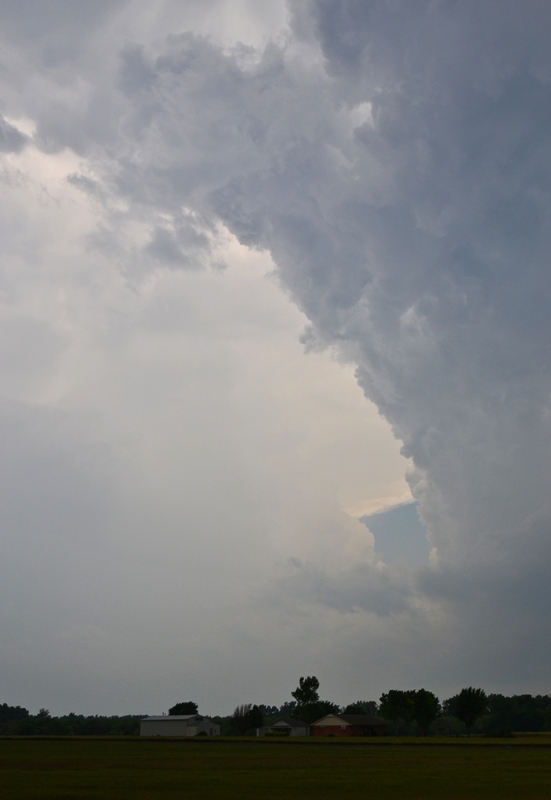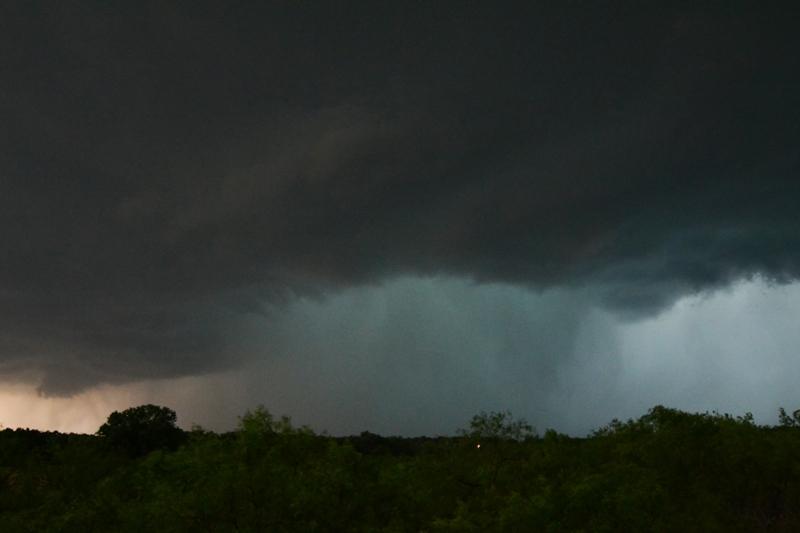2013 STORM CHASING HIGHLIGHTS VIDEO
YEAR SUMMARY
2013 started off slow, so slow in fact that I did not have a 'real' chase until May 20th! On that day, I flew into Oklahoma City from Greenville, South Carolina, where I was finishing up working for a PGA Tour tournament. The atmosphere was already ripe for severe weather, a day after a strong EF4 tornado hit Shawnee, Oklahoma. I met up with Roger Hill and Silver Lining Tours to be a guide for a 10 day tour, and we decided to pick up what guests were already in town and do an unscheduled chase. We first got on the storm that would eventually produce the deadly Moore, Oklahoma EF5, but did not want to chase a tornadic storm through the city, so elected to chase supercells down the dryline into southern Oklahoma and just across the border into Texas towards evening. We did see a weak tornado that day but missed the Moore tornado. After hearing of the destruction, many of my family members and friends were attempting to contact me, even my work travel agency contacted my office to see if I was ok since they knew that I flew in around midday to OKC. What a crazy way to start the tour.
Thereafter, we had kind of a bust day in northeast Texas on the 21st, then set up in the Panhandle for chase on the 23rd. After an awesome steak dinner at the Big Texan restaurant on the 22nd, we chased a large, dirty supercell storm the day after. May 24th took us to northeast Colorado and western Nebraska with a low precipitation (LP) storm and tornado warned supercell. May 25th and 26th were back to back phenomenal storm structure kind of days, some of the best or possibly the best that I have ever seen! Photogenic, slow-moving storms made for quite the show near Rapid City, South Dakota on May 25th, while incredible, tilted updrafts into strong supercell storms made for a great site and awesome photogenic opportunities on May 26th in central Nebraska. The video above features some nice time lapse footage from these days. May 27th featured severe storms, one that nearly produced a tornado.
May 28th in Kansas was a site to behold as a storm erupted on a boundary in north-central Kansas, sat in one spot due to weak steering flow aloft, and produced a large, violent EF4 tornado that was nearly stationary for almost an hour! This incredible tornado was one of the Tornadoes of the Year and one of the best I have ever seen. We had the privilege of watching this tornado develop, change shapes, and morph from an elephant trunk, to stovepipe, then wedge, right in front of us while not having to move at all. In fact, we were able to sit with our cameras on tripods and watch the entire supercell and tornado evolution...it was amazing, especially since this tornado did not injure anyone and did not destroy any homes. We had one down day before we chased again on May 30th in Oklahoma, chasing storms on a dryline and a massive high precipitation (HP) beast at sunset.
May 31st was the only time that I had ever chased where I thought I might be in real danger. This was a day after the final chase day of the tour, so I rented a car and chased with some friends. We set up shop in El Reno, Oklahoma and watched potent supercells develop on the dryline just to the west of Oklahoma City. Towards the end of the highlights video, you can see the wedge tornado from the southern-most supercell appear on the horizon underneath the storm, and then start to move directly at us. Thereafter, the second part of the video featured the tornado as it moved to our north and grew to as much as 2.6 miles wide, taking a left turn back north towards the interstate and increasing in speed. We got out of the way of this large, EF3 tornado but did have the rotating mesocylcone/tornado-warned storm right behind it move over us as we attempted to cross the Canadian River on the southwest side of the Oklahoma City metro area through very heavy traffic. At this point, the meso moved overhead and the winds switched around to the west and RFD hammered us. We dodged the third tornado warned storm and finally got around the backside of the training thunderstorms that produced intense flooding through the Oklahoma City area. I drove all night to get back home to Minnesota after that white knuckle adventure, driving by adrenaline and from what I had just seen.
The last few chases of the year were (sadly) in June as the atmosphere shut down for the rest of the summer thereafter. My wife and I chased 3 tornado warned storms in Iowa on June 12th, but did not see any tornadoes on this day. The storms were intense though, and we saw a really nice shelf cloud and got in some nickel size hail. One of the very few tornadoes in Minnesota occurred on June 21st as we chased storms out of South Dakota into southwest Minnesota. We were able to view a very weak EF0 tornado right in front of us near Tracy, Minnesota. It wasn't much more than a grand dust devil, but it was still really cool to be that close to what certainly was a tornado. This is what finishes up the highlights video.
In summary, I managed to see 6 tornadoes this year, 1 EF4, 1 EF3, 1 EF1, 2 EF0's, and the other rating I'm not sure of. Considering it was a down year for severe weather and tornadoes, I managed to pick some great days to go, some of which featured incredible storm structure and features that made the chases very enjoyable. Looking forward to chasing storms in 2014!















